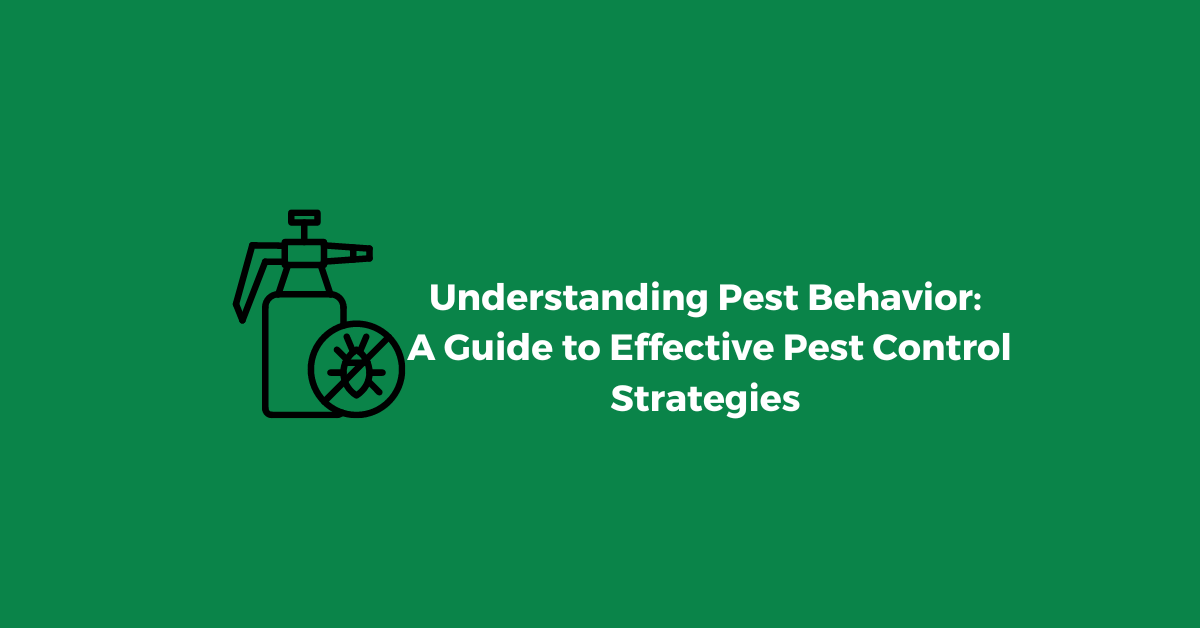Understanding Pest Behavior: A Guide to Effective Pest Control Strategies
We need to accept that the era we’re living in is all about microorganisms. As the name indicates, microorganisms are something that we can’t see with our naked eyes. While some of them are beneficial to us, others cause harm. We can call such organisms pests. Now tell me, do we consider pests our friends?…
We need to accept that the era we’re living in is all about microorganisms. As the name indicates, microorganisms are something that we can’t see with our naked eyes. While some of them are beneficial to us, others cause harm. We can call such organisms pests.
Now tell me, do we consider pests our friends? Don’t raise your eyebrows. We can’t accept that, right?
This article will give you valuable insight into different types of pests and the damage they cause. Also, you will get a thorough understanding of integrated pest management.

What do you mean by a pest?
An organism that thrives and spreads in unwelcome locations and poses a threat to crops, people, structures, and other living things is considered a pest. Such a pest can be seen in your bedsheets or your food items.
Integrated pest management solutions: Simple and effective pest control strategy
Getting rid of such pesky pests is a challenging task. But the need is ours. That is why we opt for integrated pest management solutions for controlling pests.
What is integrated pest management? The term “integrated pest management” refers to the use of a variety of pest management techniques, including chemical controls, which must be used responsibly both by adults in the home and by farmers on their crops.
How to identify pest behavior?
Understanding pest behavior gives you an advantage in effective pest management and control. After identifying the behavior of pests like insects, rodents, and other organisms, scientists and pest control professionals can develop more targeted and efficient strategies to prevent infestations, thereby minimizing their impact on the environment and human activities.
Get an appropriate pest control strategy from Pestokill
If you want a systemized pest control strategy, then you better contact Pestokill Pest Control Solutions in the UAE. Forget about the age-old pest control strategies and stay aware of the new and modern pest prevention tactics that Pestokill provides.
10 pest behavior patterns that everyone should know
Here is what you need to know about pest behavior:
- Feeding habits: Pest’s feeding habits matter! Implementing effective control measures will be easy after knowing what pests eat and how they find their food source. Some pests are drawn to specific foods, while others are generalists. Each pest has a unique feeding pattern. Understanding their feeding preferences is therefore critical for implementing baiting and trapping strategies.
- Reproduction and life cycle: It is essential to comprehend the life cycle of pests, including how they reproduce and develop, to determine when to use control measures to target them at these vulnerable times. The population of some pests fluctuates seasonally, which may influence when control measures should be taken.
- Movement patterns: By watching how pests move, you can find the best spots for traps and bait. It can help in locating entrances to structures or locations where they are most likely to cause damage.
- Habitat preferences: For survival and reproduction, pests need particular environmental conditions. Knowing where they prefer to live can help predict their presence and implement habitat modifications to discourage infestations.
- Social structure: Some pests, such as ants and termites, have intricate social structures. Understanding their social behavior is important because it allows you to target the entire colony rather than just individual insects.
- Response to environmental factors: Pests’ behavior may change in response to environmental factors such as temperature, humidity, and resource availability. Understanding these reactions can aid in forecasting their movements and activities.
- Chemical communication: Many pests communicate using pheromones or other chemical cues. It might be possible to interfere with their communication and behavior by comprehending these chemical signals.
- Learning and adaptation: Over time, some pests can pick up on and adjust to control methods. Understanding their capacity for adaptation can aid in creating more long-lasting, sustainable pest management techniques.
- Predators and natural enemies: Researching pest predators and enemies can offer important insights into biological control strategies that use natural predators to control pest populations.
- Human interactions: Human activities can unknowingly influence pest behavior. Changes in land use, waste disposal practices, or pesticide use, for example, can all affect pest populations.
Entomologists, ecologists, behaviorists, and pest control specialists must all work together to develop a multidisciplinary understanding of pest behavior. Now you are armed with these pest behavior patterns. Combine it with appropriate pest control techniques to manage pest populations more sustainably and effectively.







